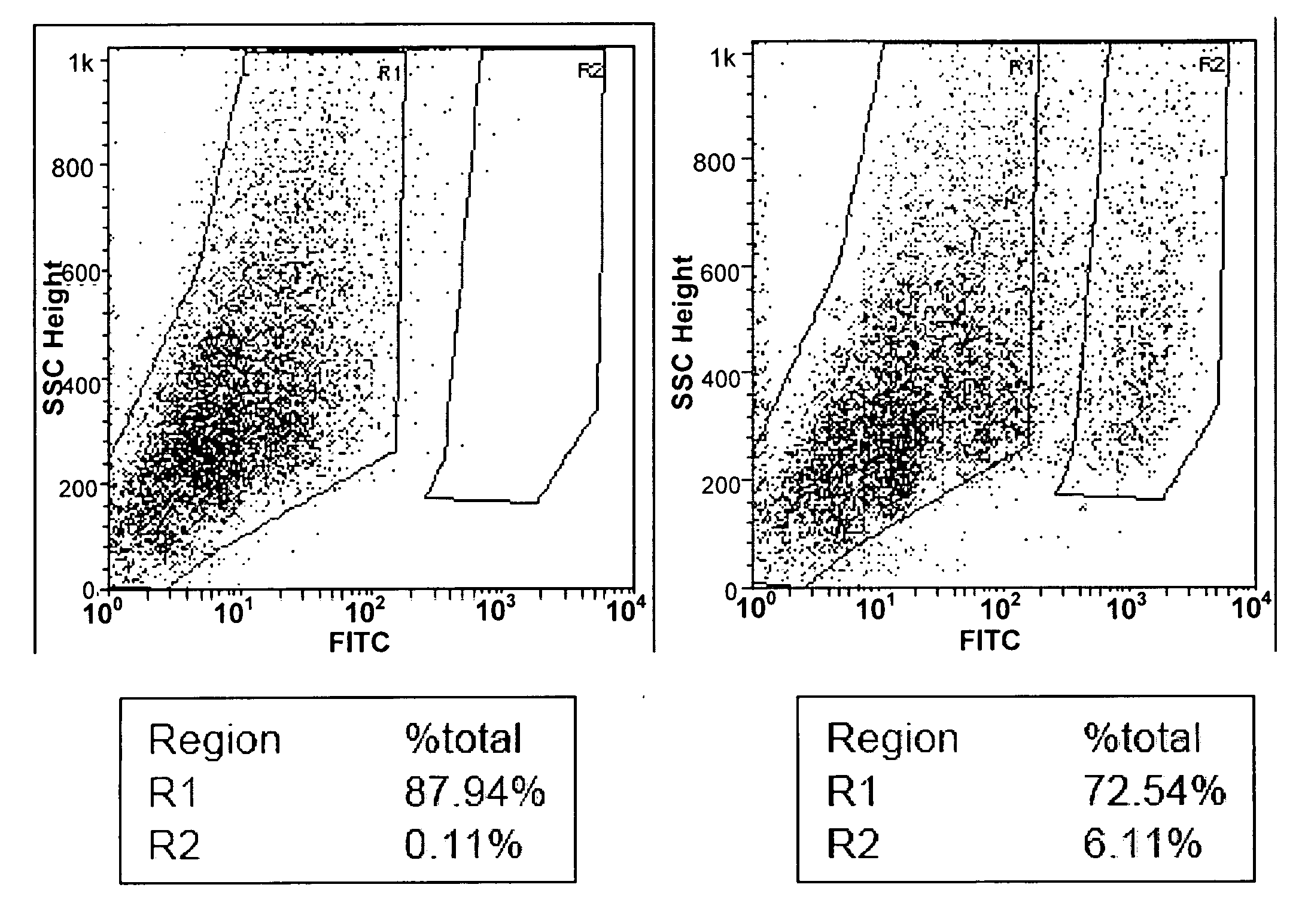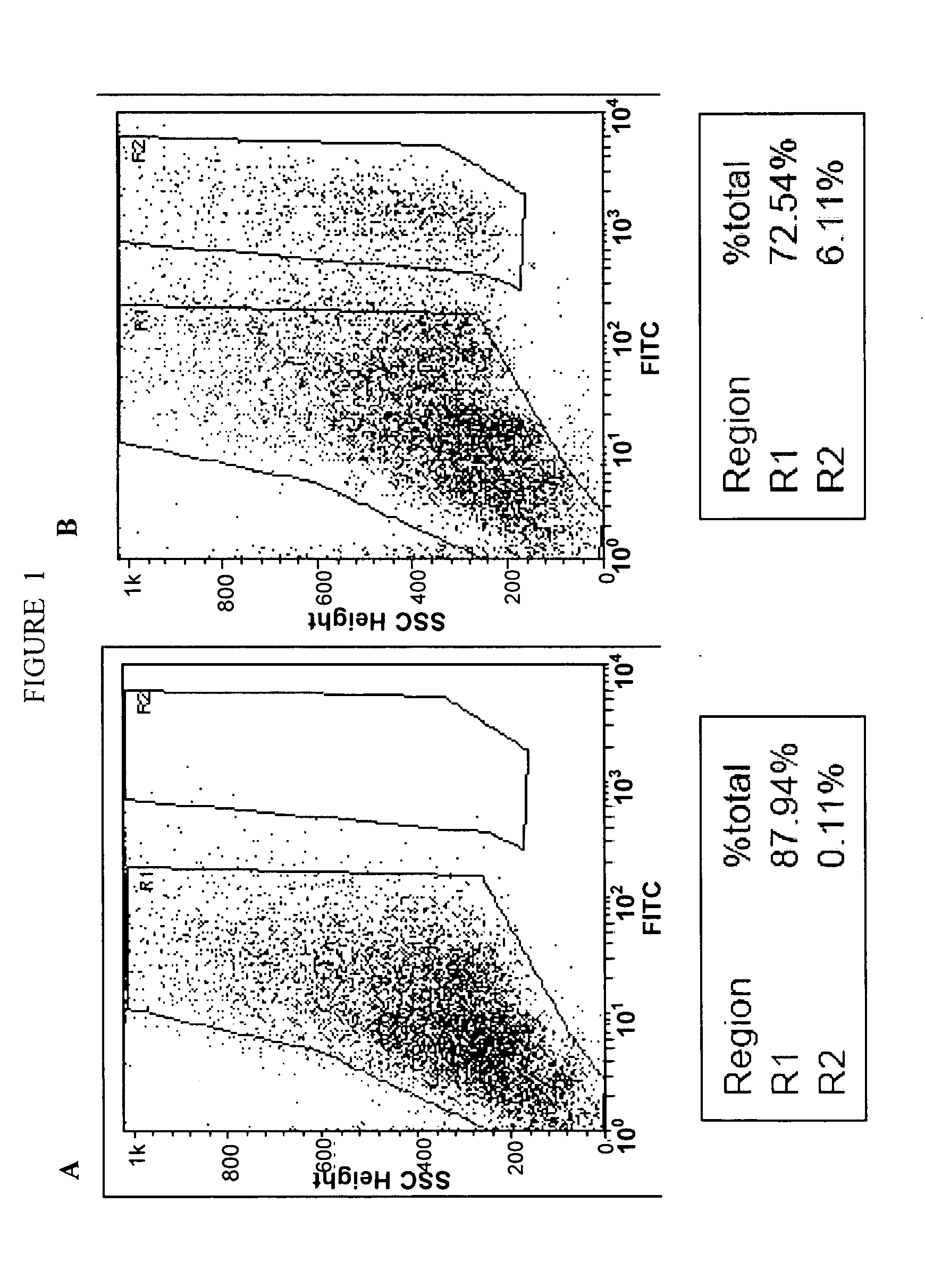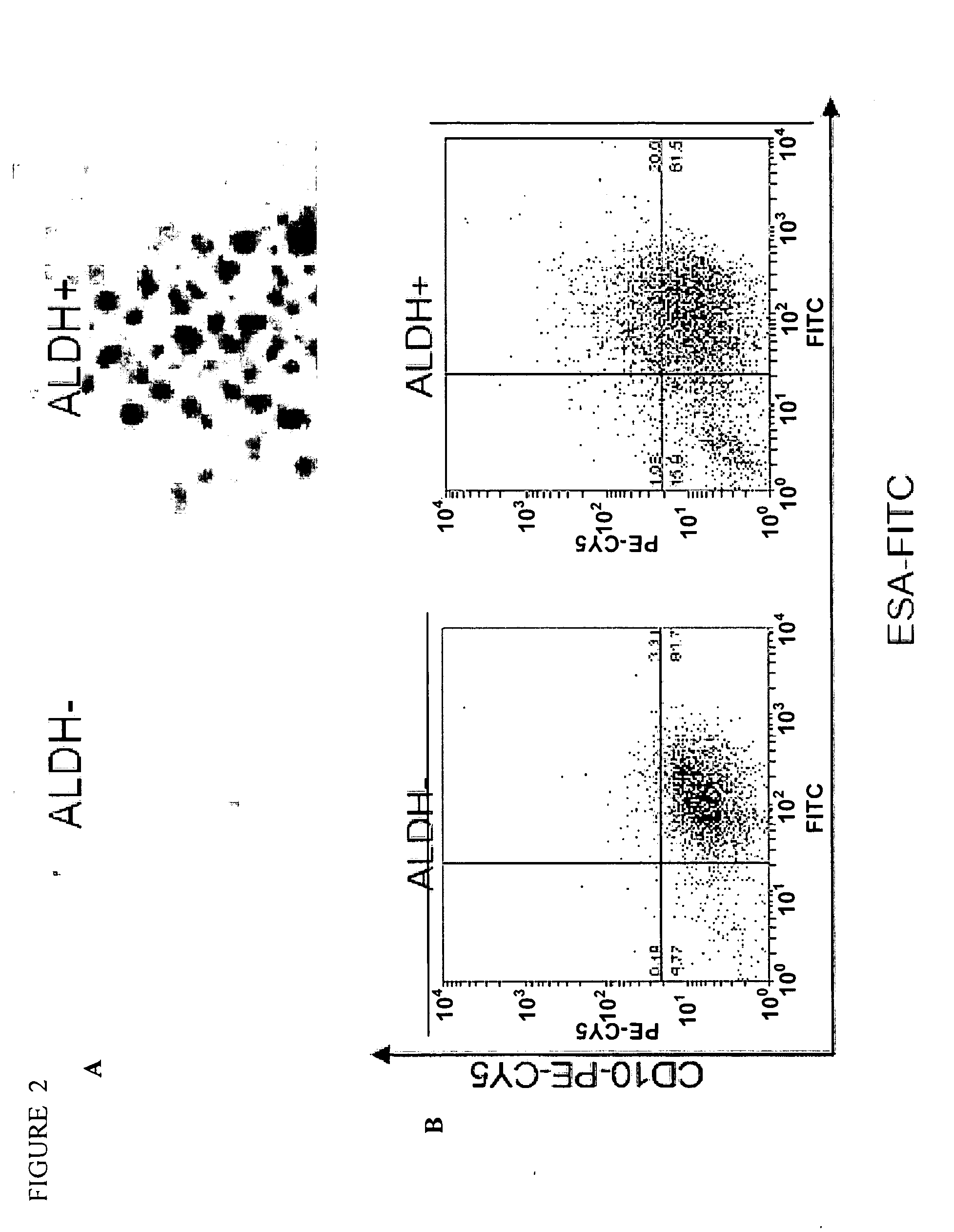ALDH1 As A Cancer Stem Cell Marker
a stem cell marker and aldehyde dehydrogenase technology, applied in the field of stem cell cancer markers, aldehyde dehydrogenase 1 (aldh1), can solve the problems of increasing the quality of life, prolonging the disease-free state and overall survival rate, and preventing cancer
- Summary
- Abstract
- Description
- Claims
- Application Information
AI Technical Summary
Benefits of technology
Problems solved by technology
Method used
Image
Examples
example 1
ALDH Positive Population Isolated from the Normal Mammary Epithelium Has Stem Cell Like Characteristics
[0112]The ALDEFLUOR test was utilized to assess the presence and size of the ALDH+ population in normal human breast samples. Single cell suspensions of normal mammary epithelial cells were obtained by mechanical and enzymatic digestion of mammoplasty samples, as previously described (Dontu et al., supra). Analysis of samples from 8 different patients showed an average of 6% ALDH+ population, in normal mammary epithelial cells (FIG. 1).
[0113]The clonegencity of this population was analyzed in suspension culture (non-adherent mammospheres) and on collagen substratum (conditions that promote differentiation). Only the ALDH positive population was capable of generating mammospheres in suspension culture, whereas the ALDH negative population failed to grow in anchorage independent conditions (FIG. 2A). Previously published data supports the idea that the mammary epithelial cell populat...
example 2
Tumorigenicity of the ALDH Positive Cells Isolated from Human Breast Cancers
[0115]The same Adefluor test was used to investigate the representation of the ALDH+ population in breast cancer cells. Two human breast cancers (MC1 an ER−PR−Her2-tumor and UM2, an ER+PR+Her2-tumor) were analyzed orthotopically xenotransplanted in NOD / scid mice (these cells were not grown in vitro). The ALDH+ population was present and represented approximately 5% (MC1) and 8% (UM2) of the total cell population. The tumorigenicity of the ALDH+ population sorted from MC1 was tested in serial passages, using limiting dilutions of cells (50,000 cells, 5000 cells and 500 cells). Three passages were performed, and in all three only the ALDH+ cells formed tumors, even when implanted in low numbers. As shown in FIG. 3C, size and latency of tumor formation correlated with the number of ALDH+ cells injected. Remarkably, ALDH+ cells were capable to generate a tumor in only a month, from 500 cells injected. ALDH− cell...
example 3
In Situ Immunostaining Using ALDH1 Antibody
[0117]The early studies showing a correlation between ALDH expression and hematopoietic stem cells used fixed cells and staining with ALDH 1 antibody (Kastan et al., Blood, 75:1947-1950, 1990, herein incorporated by reference). ALDH being a cytosolic enzyme, this method is not useful for studies in which functional properties of the ALDH positive cells need to be assessed. The ALDEFLUOR kit was developed to address this problem. Viable cells that express ALDH 1 can be isolated by flow cytometry, using fluorescent aldehyde substrates that freely diffuse across cell membranes. Using this enzymatic assay and flow cytometry activated cell sorting (FACS), ALDH+ cells can be isolated and cultured or used in in vivo experiments.
[0118]However, the in situ detection of normal or cancer stem cells, is an important step forward for the application in of cancer stem concepts to clinical practice, by enabling the use of stem cell markers in roution exam...
PUM
 Login to View More
Login to View More Abstract
Description
Claims
Application Information
 Login to View More
Login to View More - R&D
- Intellectual Property
- Life Sciences
- Materials
- Tech Scout
- Unparalleled Data Quality
- Higher Quality Content
- 60% Fewer Hallucinations
Browse by: Latest US Patents, China's latest patents, Technical Efficacy Thesaurus, Application Domain, Technology Topic, Popular Technical Reports.
© 2025 PatSnap. All rights reserved.Legal|Privacy policy|Modern Slavery Act Transparency Statement|Sitemap|About US| Contact US: help@patsnap.com



